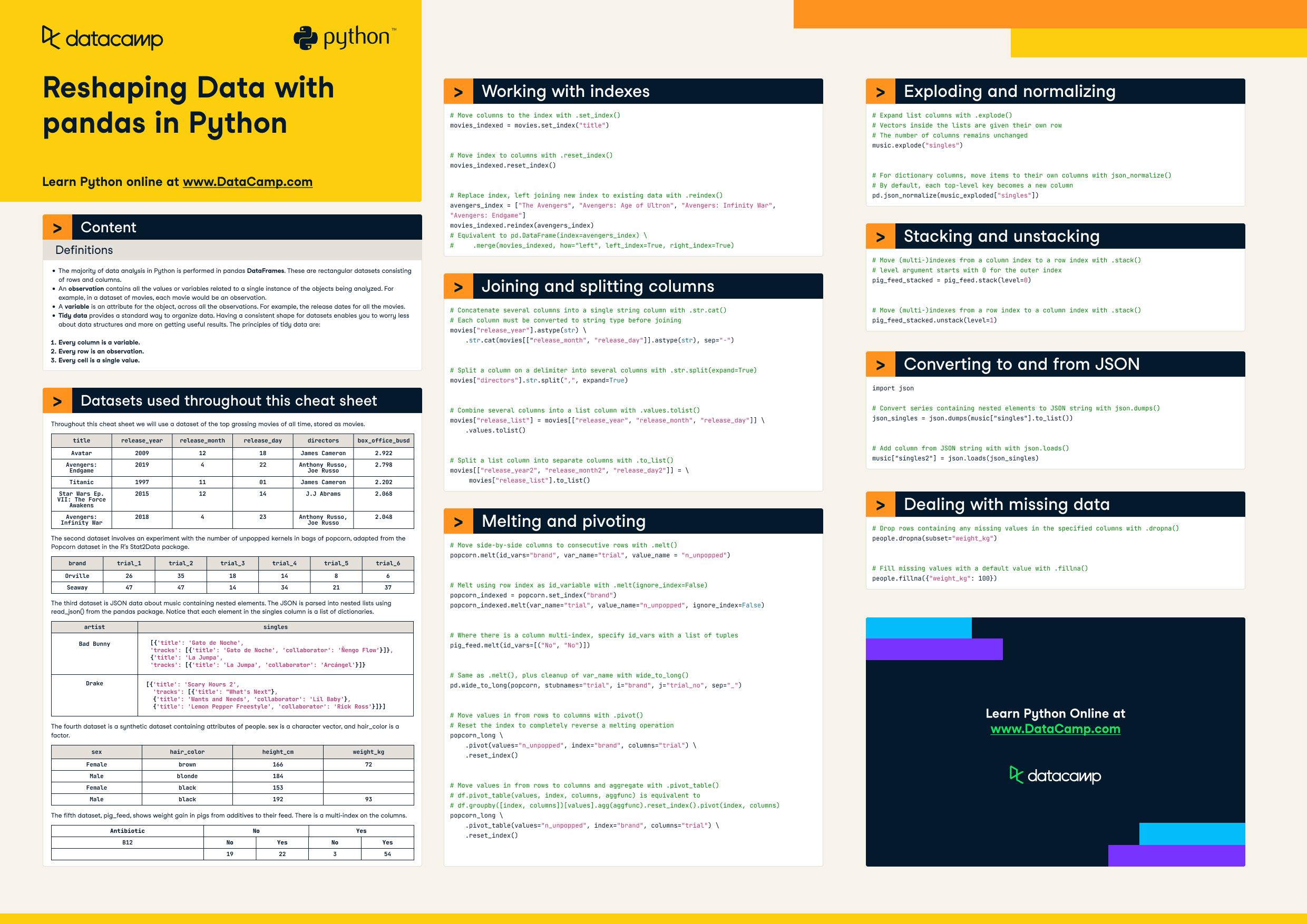Reshaping Data with pandas in Python
Pandas DataFrames are commonly used in Python for data analysis, with observations containing values or variables related to a single object and variables representing attributes across all observations.
Feb 2023
RelatedSee MoreSee More
cheat sheet
Pandas Cheat Sheet for Data Science in Python
A quick guide to the basics of the Python data analysis library Pandas, including code samples.
Karlijn Willems
4 min
cheat sheet
Pandas Cheat Sheet: Data Wrangling in Python
This cheat sheet is a quick reference for data wrangling with Pandas, complete with code samples.
Karlijn Willems
4 min
tutorial
Pandas Tutorial: DataFrames in Python
Explore data analysis with Python. Pandas DataFrames make manipulating your data easy, from selecting or replacing columns and indices to reshaping your data.
Karlijn Willems
20 min
tutorial
Data Preparation with pandas
In this tutorial, you will learn why it is important to pre-process data and how to do it in pandas.
Sejal Jaiswal
15 min
tutorial
Python Select Columns Tutorial
Use Python Pandas and select columns from DataFrames. Follow our tutorial with code examples and learn different ways to select your data today!
DataCamp Team
7 min
tutorial
Python Exploratory Data Analysis Tutorial
Learn the basics of Exploratory Data Analysis (EDA) in Python with Pandas, Matplotlib and NumPy, such as sampling, feature engineering, correlation, etc.
Karlijn Willems
30 min
